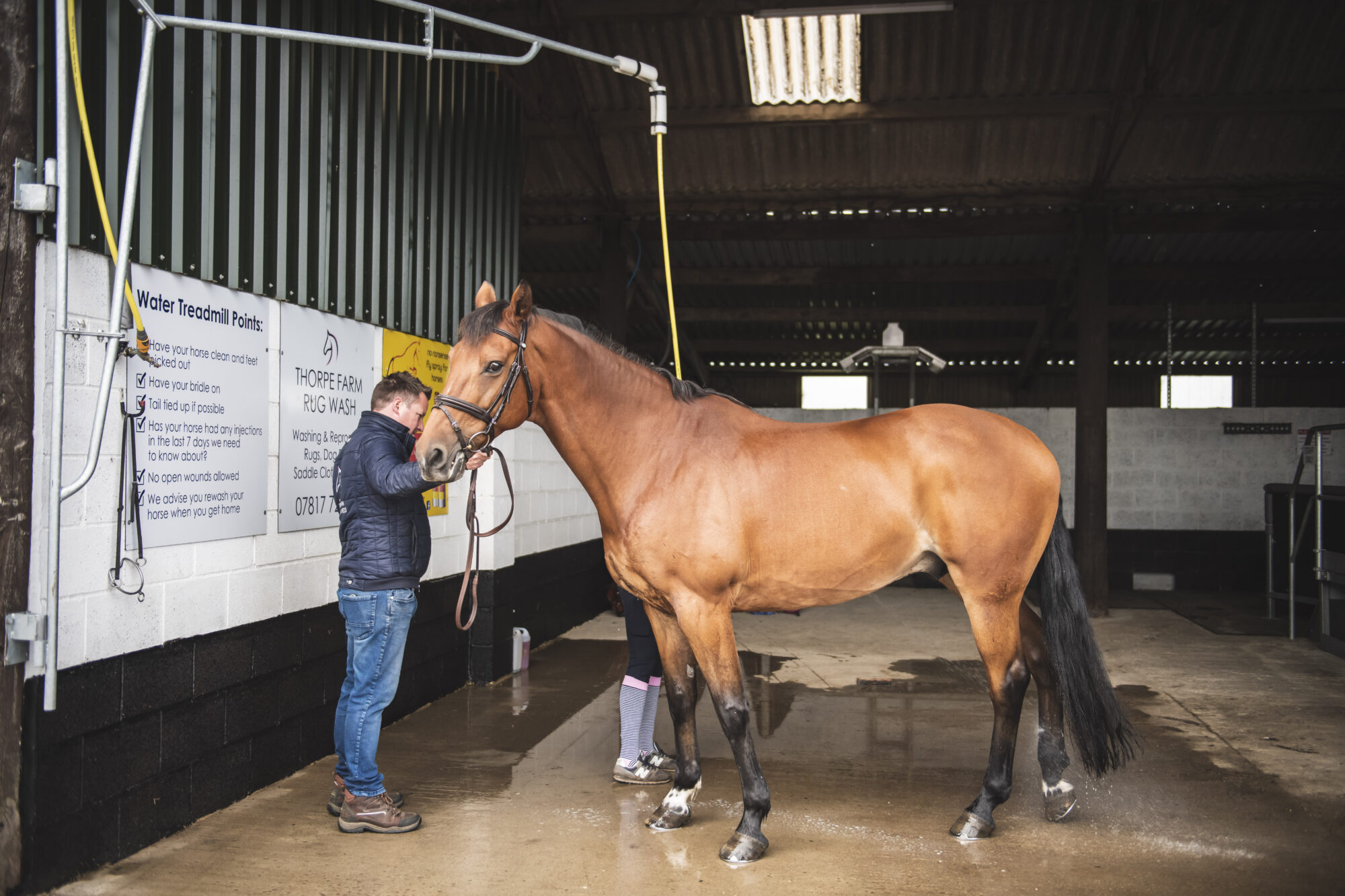The old saying among horsemen and women of ‘no foot, no horse’ is certainly true. Many horse owners will know the pain of trying to get their four-legged friend’s hooves in good condition, buying supplements, tonics and oils to strengthen that horn so that their horse has a strong, stable platform to work off. We all hang onto good farriers like mad, knowing how valuable they are to our horse’s welfare. But the same phrase could easily apply to something a little higher up – their legs!
There’s no muscle at all below a horse’s knee on their forelegs or hocks on their hind legs, and they are technically walking on the tips of their toes (which are covered by the tough hoof wall to protect them). That lack of muscle means the health of their tendons and ligaments is key to their movement – and therefore wellbeing – but it also leaves that soft tissue exposed to knocks. Of course, there’s also a skeleton underneath that needs caring for, so what can you do to make sure you’re taking the best possible care of their legs? In this month’s blog we’re sharing our top tips for looking after your horse’s legs. We hope they’ll help you keep them sound and well, so that you can both enjoy adventures for as many years as possible.
Know what’s normal for your horse
A very important task at competition and racing yards is the regular checking of legs! Stable staff check legs before they work their charges, and some trainers still take the time to go round the yard and feel every horse’s legs during evening stables. That’s because knowing what’s normal is the best way to catch any changes early. You’re looking for any heat, nicks or swelling, however small, so you can then treat or rest accordingly.
Consider the ground conditions
It’s not been a very easy year for British horse riders – we’ve had so much rain! That’s made getting horses fitter tricky if you rely on bridleways, and then of course the ground still went hard for a few weeks! Check out where your nearest gallops are that you can hire, as there’s nothing better for getting them fit and taking care of their legs. Just make sure you ask about the surface – ours is an Andrews Bowen canter surface that is stable, supports their legs and absorbs shock really well.
That’s not to say that you should only ever ride your horse on perfect ground! Riding them over a range of surfaces has been shown to help horses in several ways. Softer ground (not deep or very soft ground though) can help condition the soft tissues to a greater range of motion while working on firm ground has been shown to stimulate bone density and thickening of the cortical bone. Uneven ground helps them develop proprioception, which in turn means they are more balanced and surefooted when over rougher terrain. Takeaway? A variety of surfaces is best, just be careful not to do fast work over hard or rough ground…
Avoid very repetitive exercise
If you’re aiming to compete in indoor showjumping or dressage this winter, it might be tempting to focus your training entirely on that! But it’s important to weave in cross-training for all horses – whether that’s hacking, grids, long reining, water treadmill or a session on the gallops. Cross training helps prevent the accumulation of microdamage that in time can lead to soft tissue injury. We love the water treadmill for some low-impact, straight line cross training that has the added bonus of boosting cardiovascular health and topline muscle.
Protect their legs – but watch the heat!
As we mentioned in the introduction, the tendons and ligaments in your horse’s legs are very exposed, so it’s vital to protect them for jumping and fast work. Look for boots that protect the leg while allowing plenty of air to flow over the skin. There are some great options on the market with carbon-fibre strike pads to keep those tendons protected.
Avoid boots with fluffy synthetic linings or the temptation to bandage their legs for work – both will cause the internal structures of the leg to heat up, and that can cause the cells in soft tissue to break down. The temperature only needs to exceed 42.5°C for cell damage to begin, so please don’t be tempted by those matchy-matchy bandage sets!
Cool their legs after exercise
Why are people so obsessed with cooling legs after work? It’s because the constriction of the blood vessels caused by cold water reduces inflammation and swelling and reduces pain. Then, the boosted blood flow to the legs when the cold hosing stops can help promote healing from any microdamage that has occurred.
There are lots of ways to cool legs, but the cheapest (and arguably most effective) is to run cold water from the hose over their lower legs. There are cooling boots and clays on the market, but unless your horse has a specific injury or you’re very pushed for time, a cold hose will be just fine! Make sure you remove boots (or bandages, if you use them) immediately after work to allow the legs to start to cool…
There are lots of other small steps you take, from warming up and cooling down properly to doing stable stretches after work, that will help prevent injuries. If you can follow the steps above, your horse will have a better chance of avoiding leg injury when you’re out enjoying yourselves.
